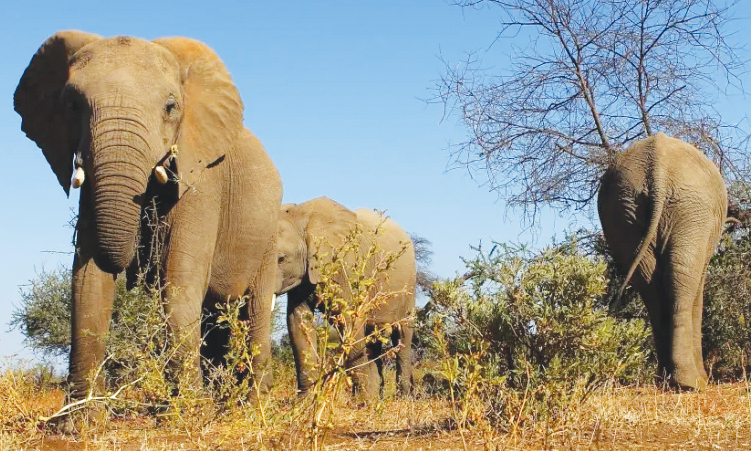By Contributor,Jamie Hailstone
Copyright forbes

SYDNEY, AUSTRALIA – NOVEMBER 27: People watch as the sun rises over Ben Buckler Point in Bondi on November 27, 2024 in Sydney, Australia. Australians are at risk of enduring rolling blackouts this week, amid a heatwave sweeping through NSW and unexpected coal outages across the state. A severe heatwave warning has been issued by the Bureau of Meteorology for parts of eastern NSW over the next few days – with the mercury tipped to soar into the high 30s in some regions. Some areas reached a maximum temperature of 37C on Monday, with Richmond and Perth in Sydney’s west also clocking in at 35C. (Photo by Brook Mitchell/Getty Images)
Getty Images
Planning for a warmer world is critical as average global temperature rises look set to exceed the Paris Agreement’s goal of 1.5 degrees Celsius, according to a new analysis.
The new report by S&P Global estimates a 90% likelihood that, by 2040, the average global temperature will exceed the Paris Agreement’s goal of 1.5° Celsius above preindustrial levels and there is a 50% likelihood of it exceeding 2.3 degrees Celsius.
But despite the evidence to show the world is getting warmer, the study also notes climate adaptation and resilience needs remain largely unmet.
It claims this partly due to the private sector overlooking the societal benefits of adaptation, the costly implementation of adaptation and resilience investments, and uncertainties and data gaps associated with climate risk modelling.
The study says climate adaptation and resilience remain insufficient to cope with the potential economic damage associated with climate change.
The study also quotes figures from the United Nations Environment Programme estimates the gap in adaptation investments at about $210 billion yearly by 2030 for developing economies alone
This is despite evidence that economic losses related to physical climate risks are rising, reaching $328 billion in 2024 according to Swiss Re.
“The world is shifting to a less ambitious pace of emissions reductions,” the report states.
“Our probabilistic model shows global warming is likely to reach 2.3 degrees Celsius as soon as 2040.”
Marion Amiot, the head of climate economics and European economist at S&P Global Ratings said they modelled various scenarios in order to find the most likely outcome in terms of temperature increases, in an interview.
MORE FOR YOU
Amiot said they estimate there is just 2.5% chance average temperatures will rise by less than 1.5 degrees above pre-industrial levels by 2040, which was the goal outlined in the Paris Agreement.
“When you look at adaptation and resilience investment globally, it does not seem that we are prepared to deal with 2.3 degrees, which we have a 50% chance of reaching by 2040,” she told me.
“It’s not quite clear what we are prepared for, but there’s definitely a lot of evidence the world has not invested enough in climate change resilience.”
Amiot there are a number of reasons for this, including a lack of available data and whether some measures are taking place, but not been recorded or measured as adaptation measures.
Enrico Biffis, a professor of actuarial finance at Imperial Business School said there is a growing need to understand what the climate will realistically look like in order to plan accordingly, in an email.
Professor Biffis added if a warmer world is the prudent baseline, adaptation can no longer be an afterthought, it must sit at the core of risk management.
“The returns on targeted resilience measures, whether flood defences, cooling systems, or logistics rerouting can be significant once you align them with the most likely outcomes,” said Biffis.
“S&P’s approach pools thousands of emissions scenarios and bakes in climate-sensitivity uncertainty, which is exactly what decision makers need to calibrate strategy to a warmer baseline, manage the tails explicitly, and time investments as the odds evolve.”
A separate report recently published by the Zurich Climate Resilience Alliance warns the private sector cannot and will not provide the majority of developing countries’ adaptation funding needs.
The analysis argues, with a concerted effort, private sector adaptation flows could increase from the current figure of 3% to 15% or more.
But it adds these opportunities are mostly in middle-income countries, and in specific sectors such as agriculture and water management.
Debbie Hillier, the head of the Zurich Climate Resilience Alliance for Mercy Corps, said adaptation is consistently underfunded, and the adaptation funding gap stands at nearly $300 billion per year, in an email.
Hillier added unlike mitigation, many adaptation projects have social or environmental benefits but are not commercially viable.
For example, while coastal defences protect communities from losses, they do not directly generate income, so there is less investment from the private sector.
“Adaptation is not a ‘nice to have’, or a choice,” she said. “It is a lifeline for vulnerable communities.
“Without it, countries that are struggling with the effects of climate change cannot build the resilience that communities urgently need.”
Editorial StandardsReprints & Permissions



